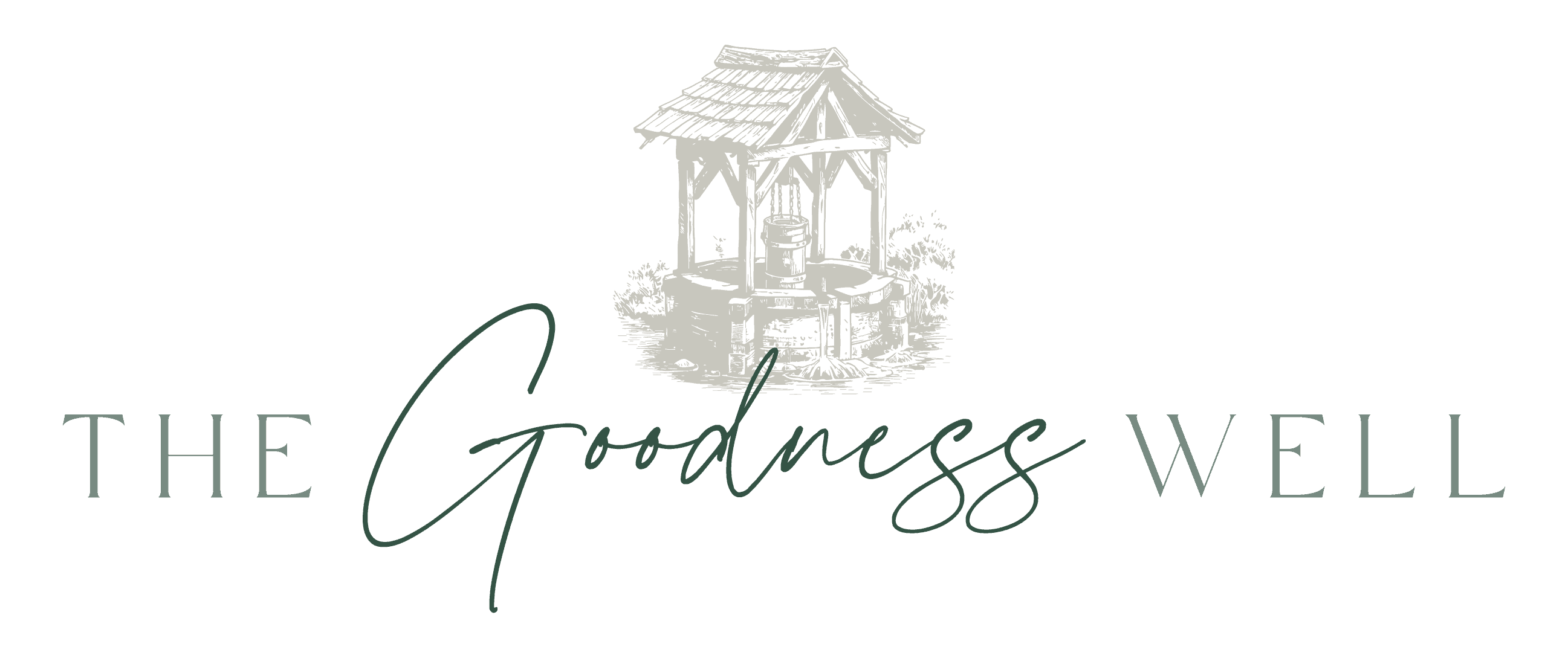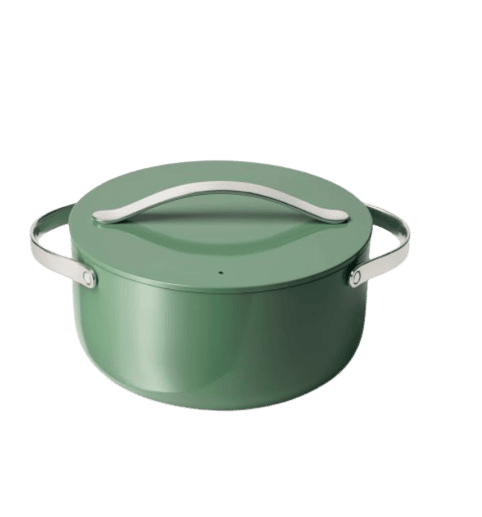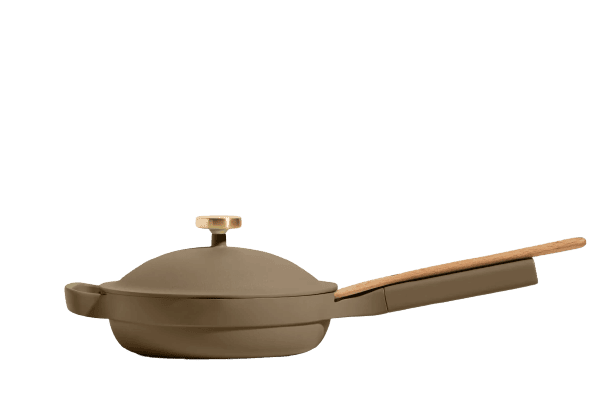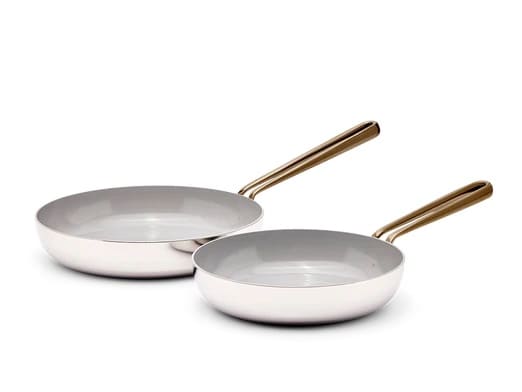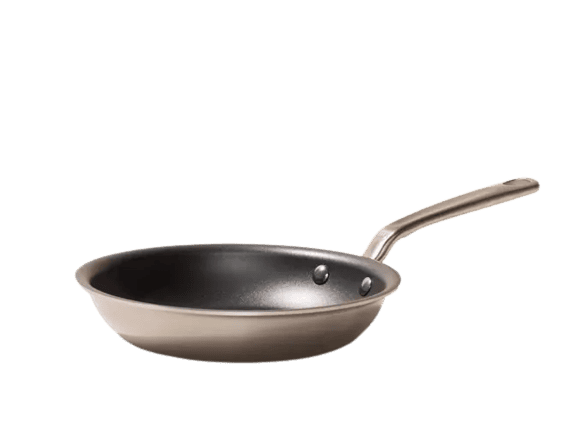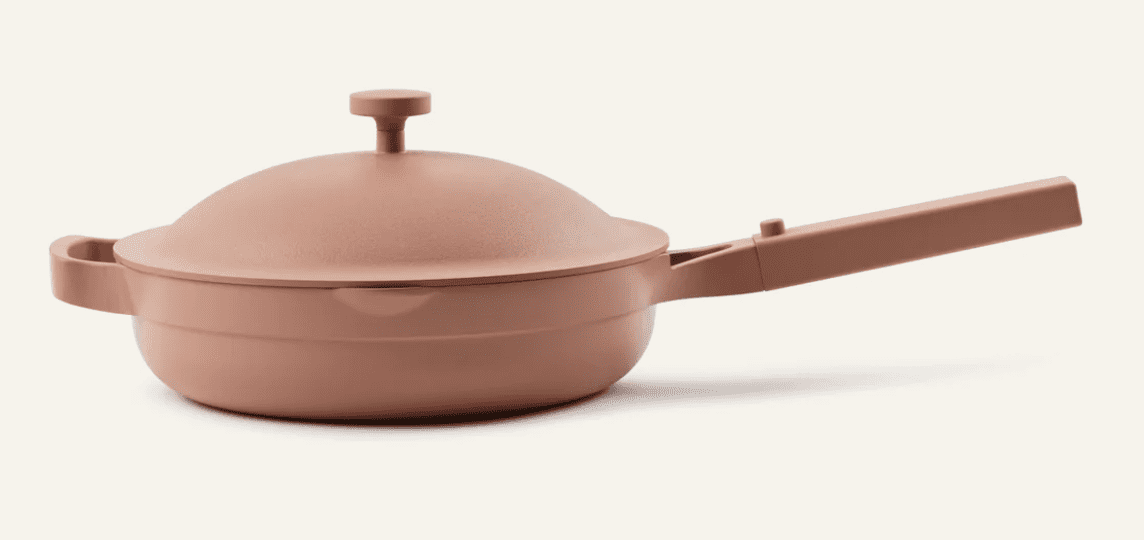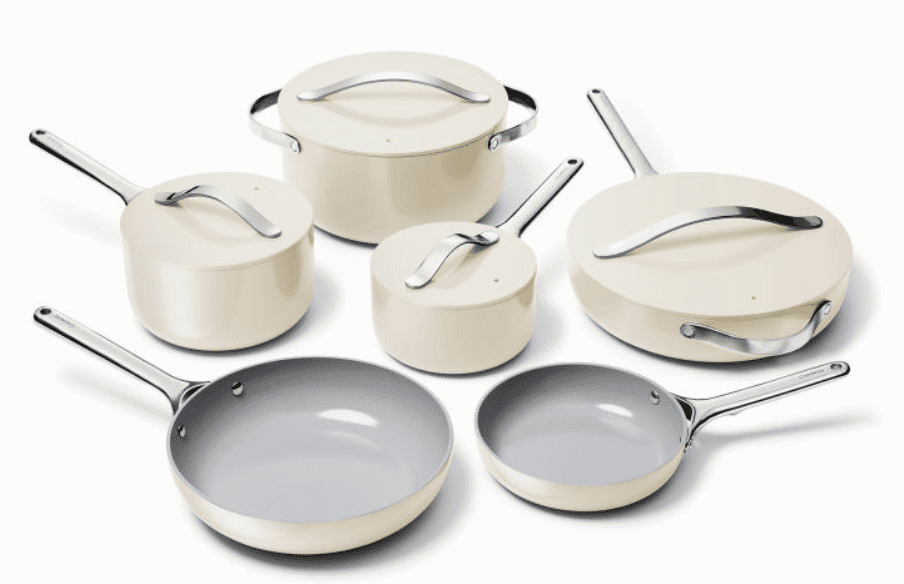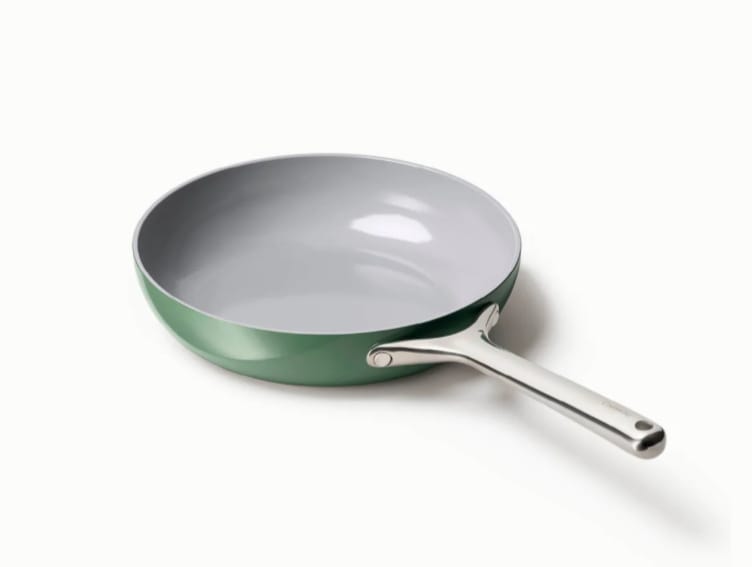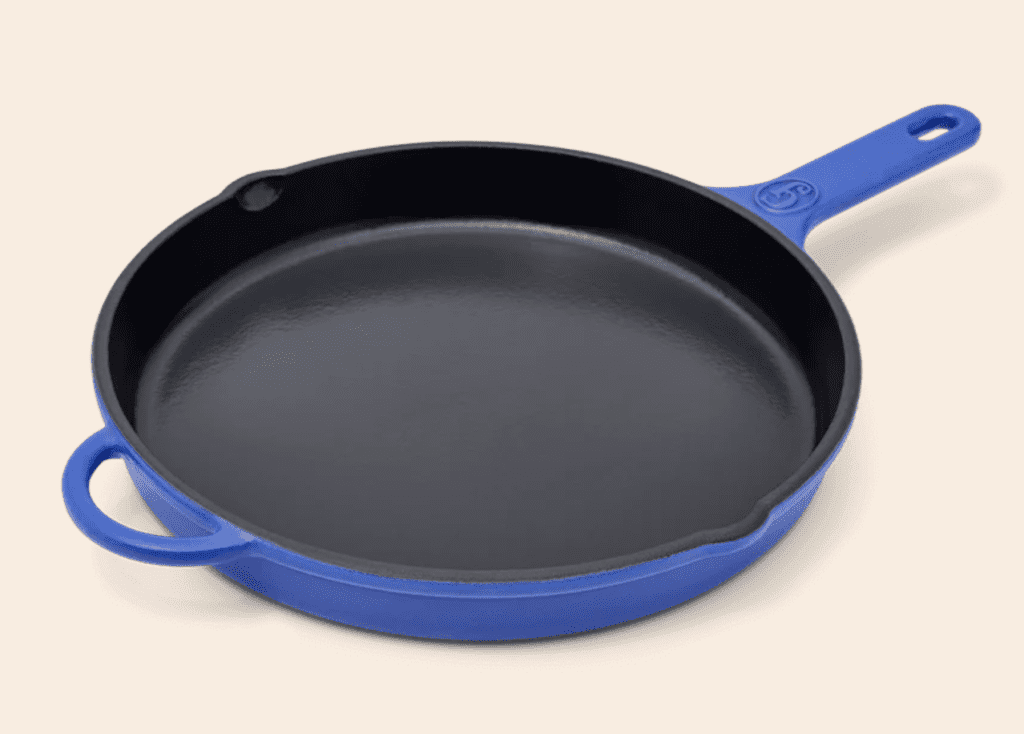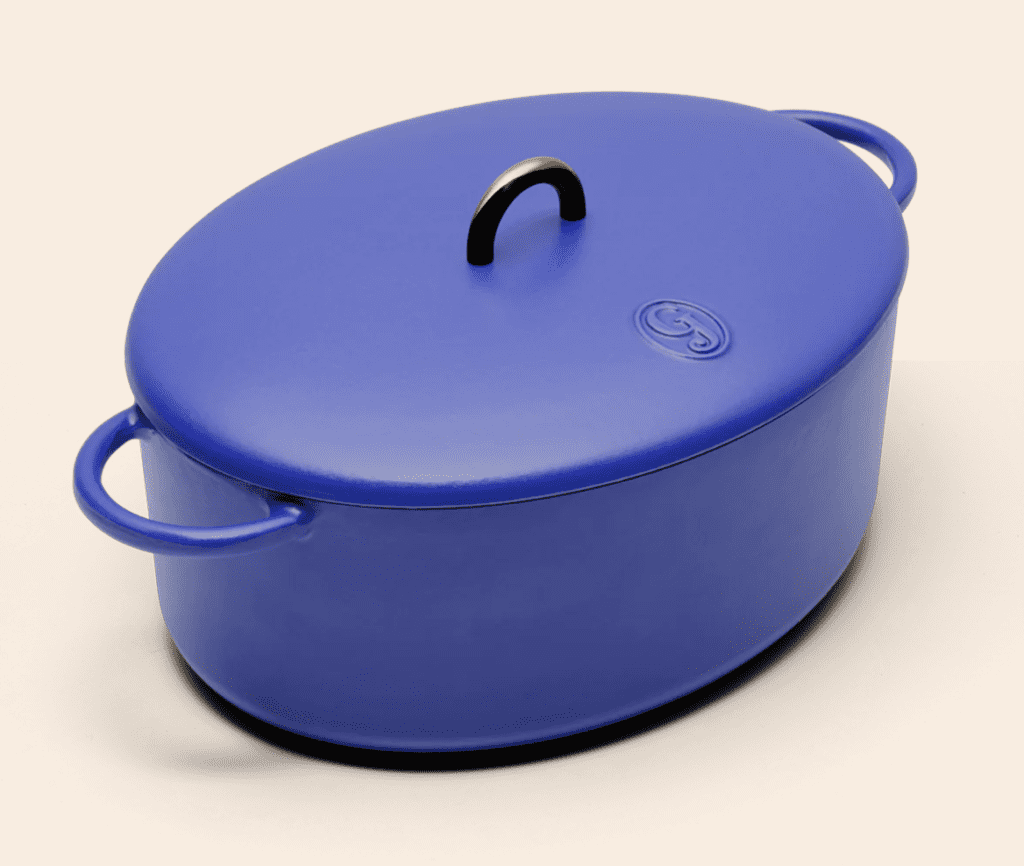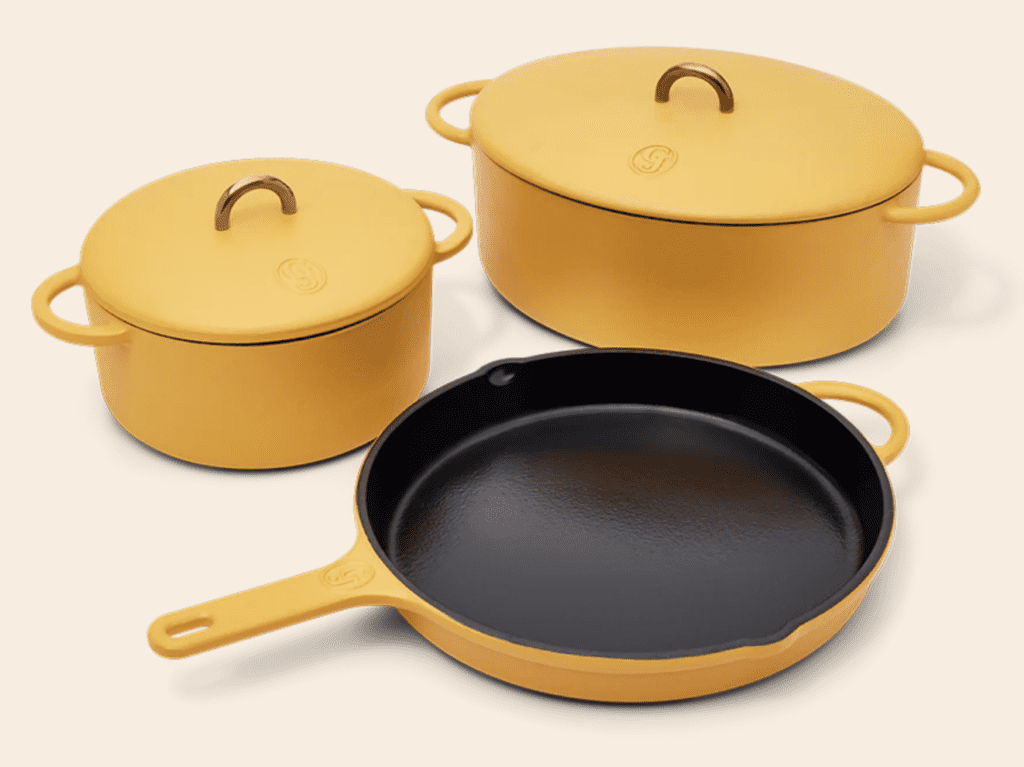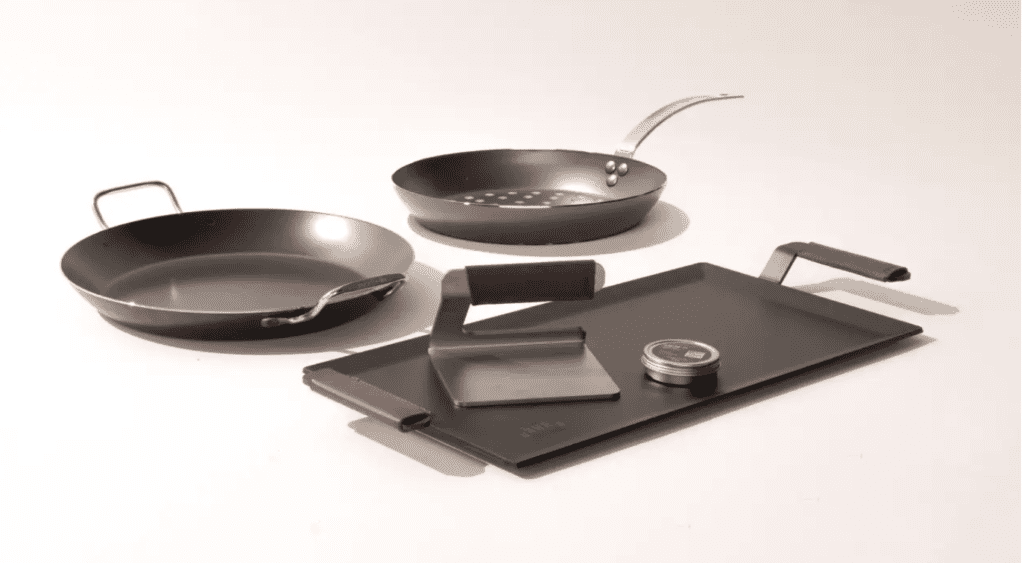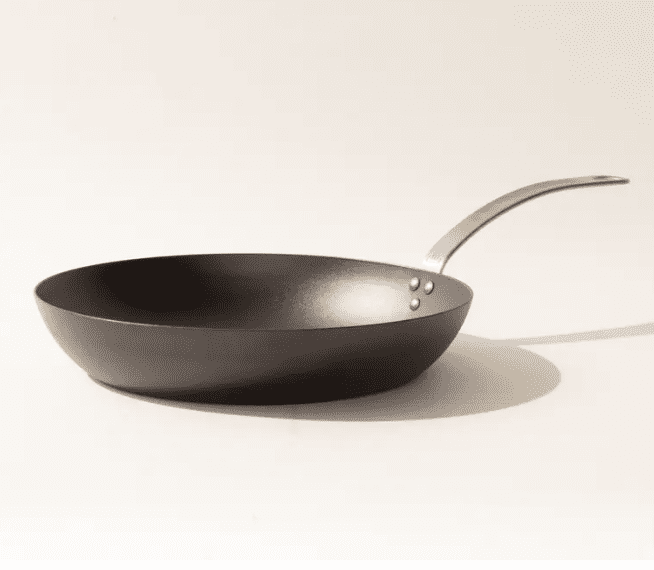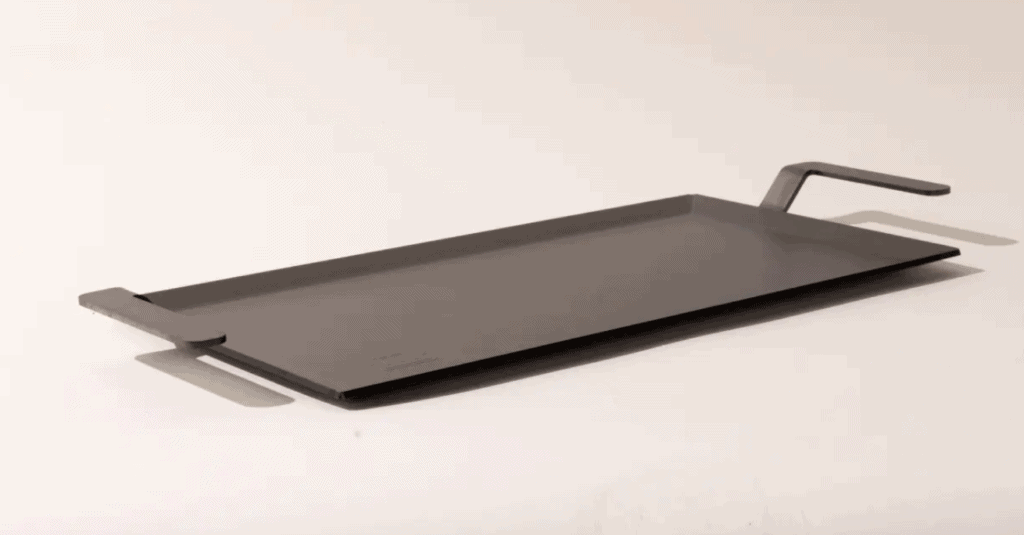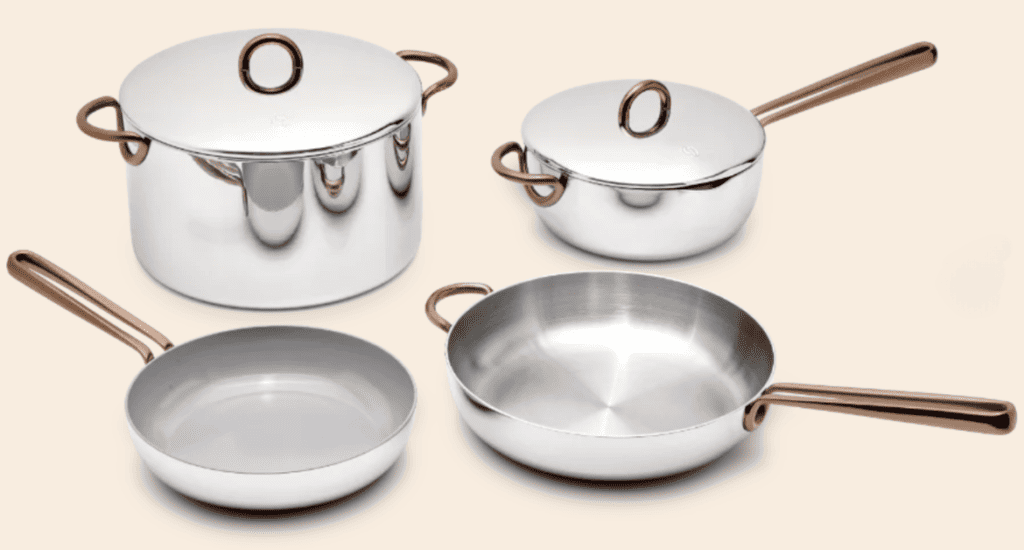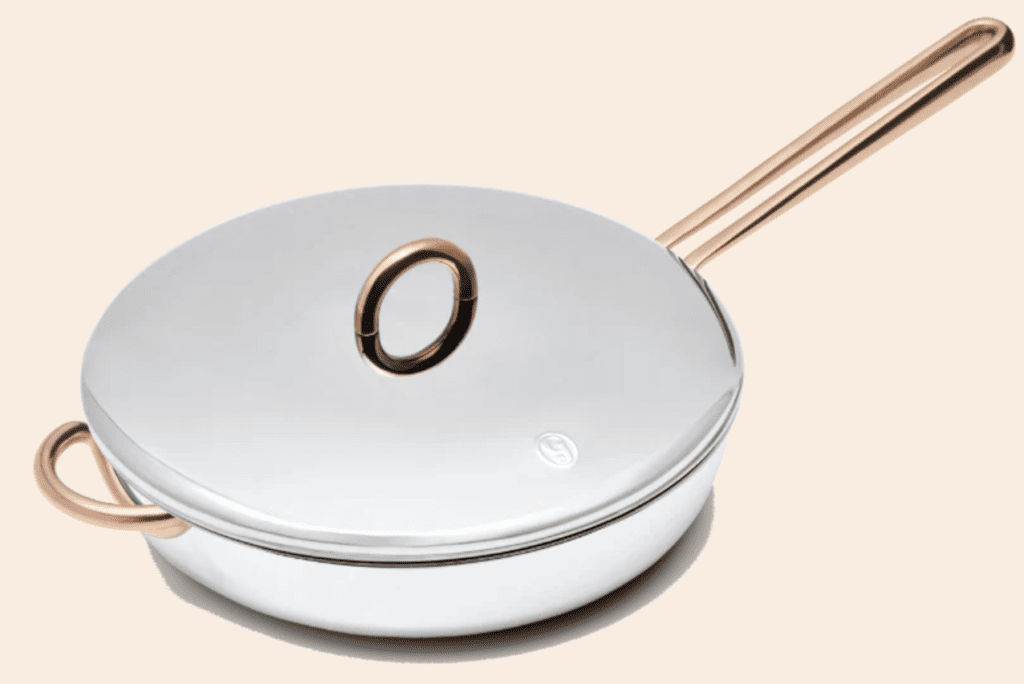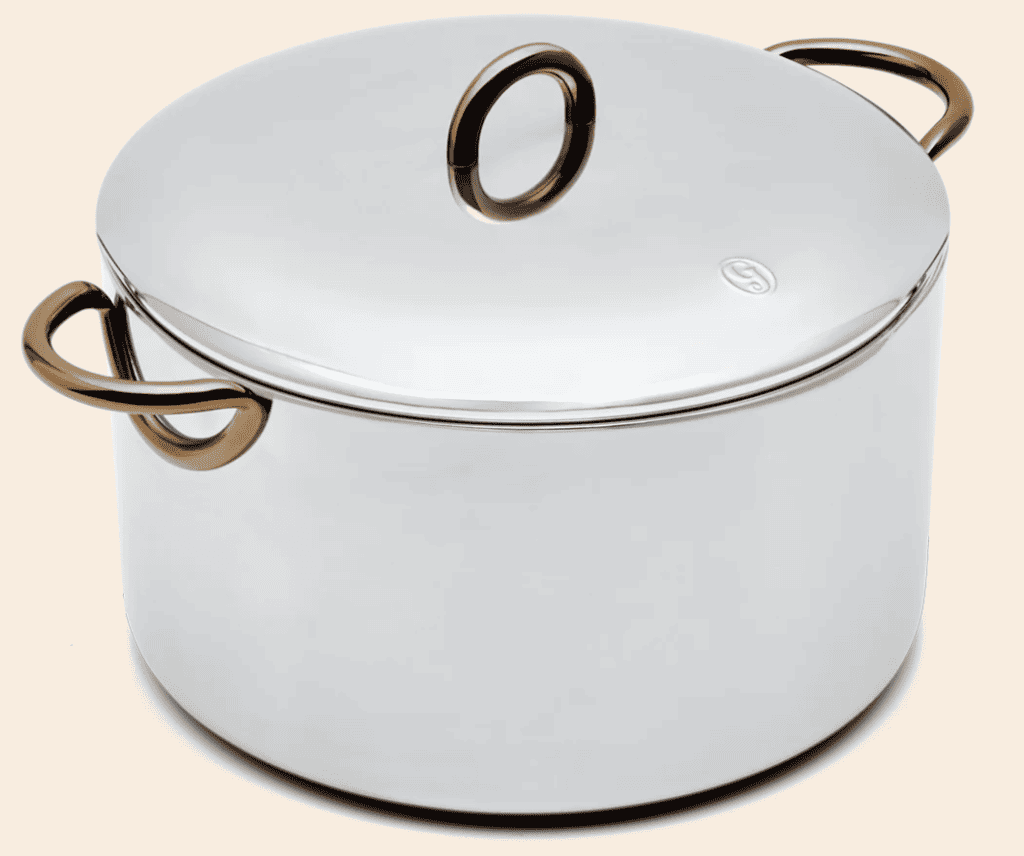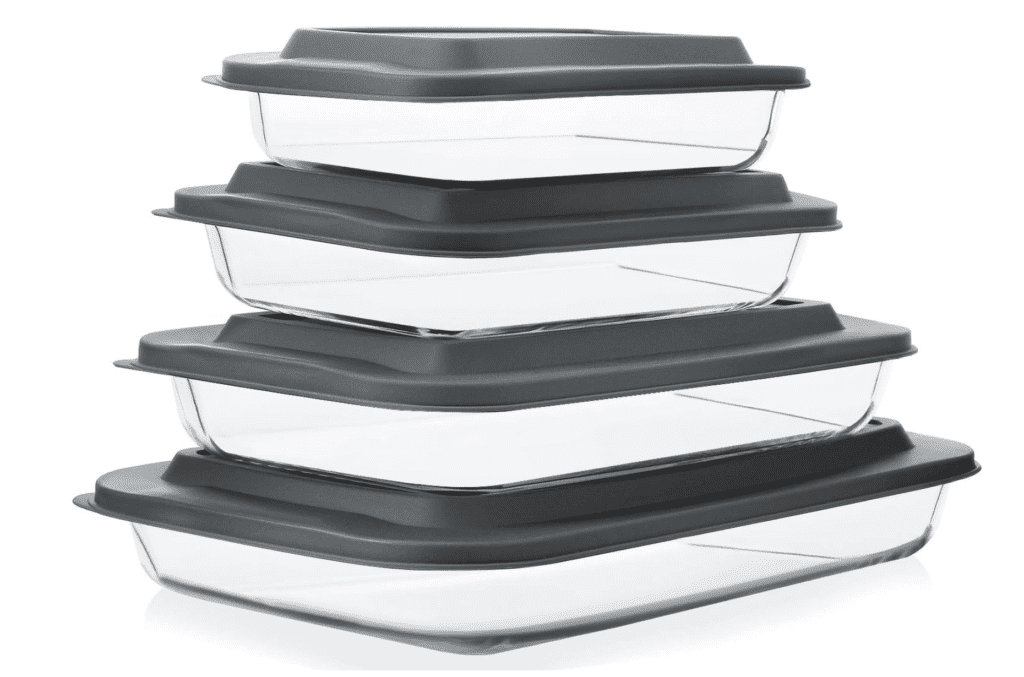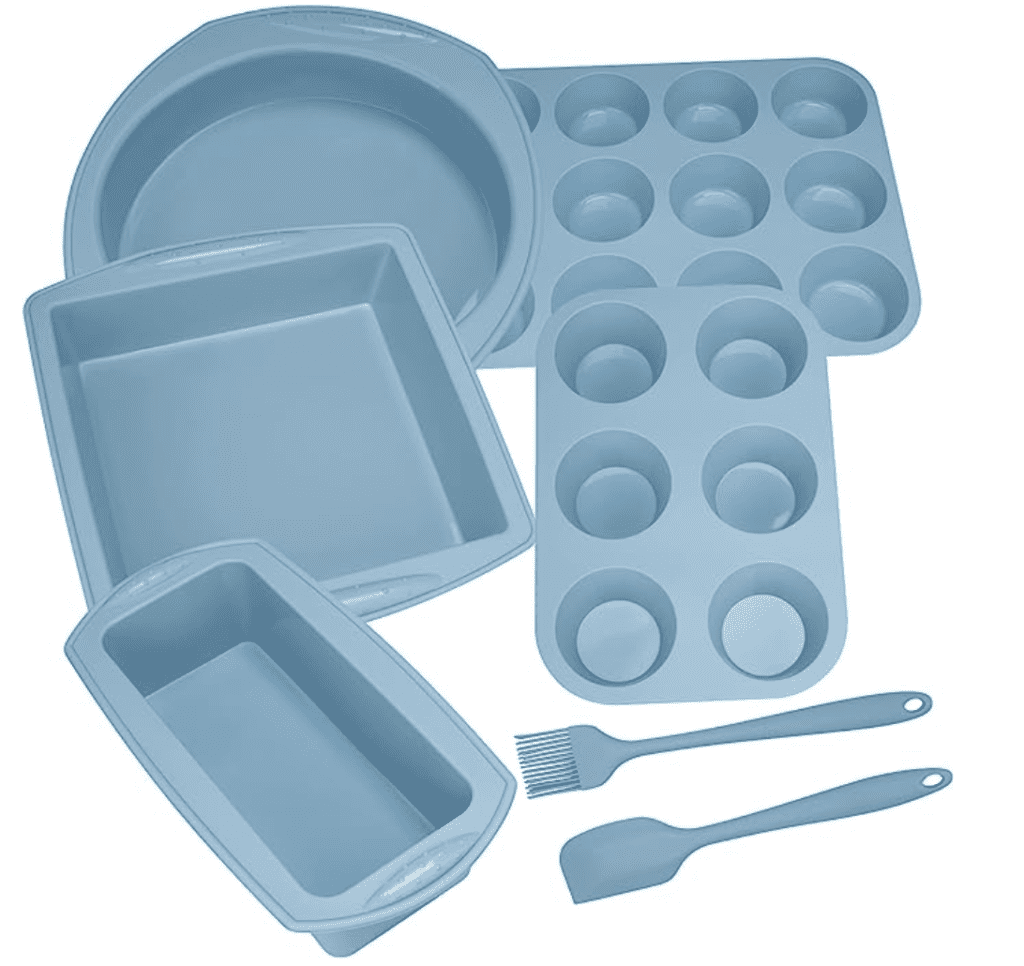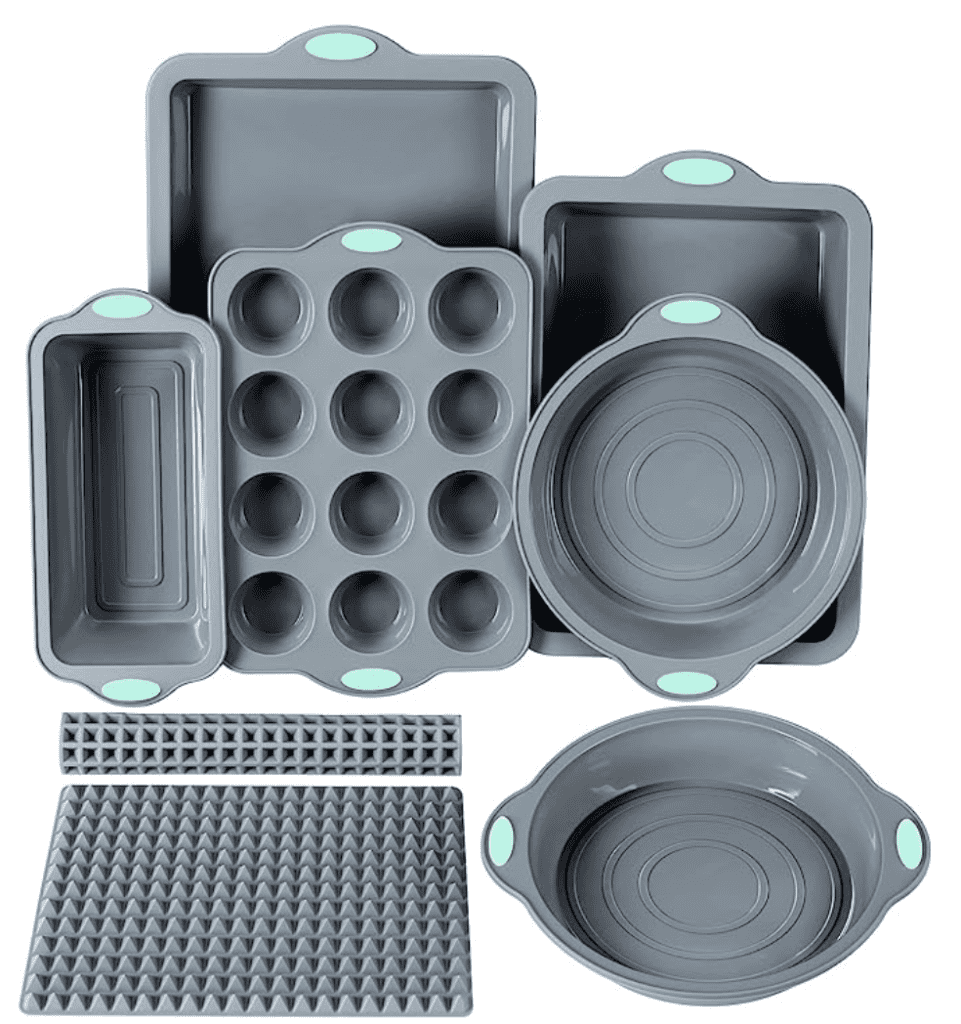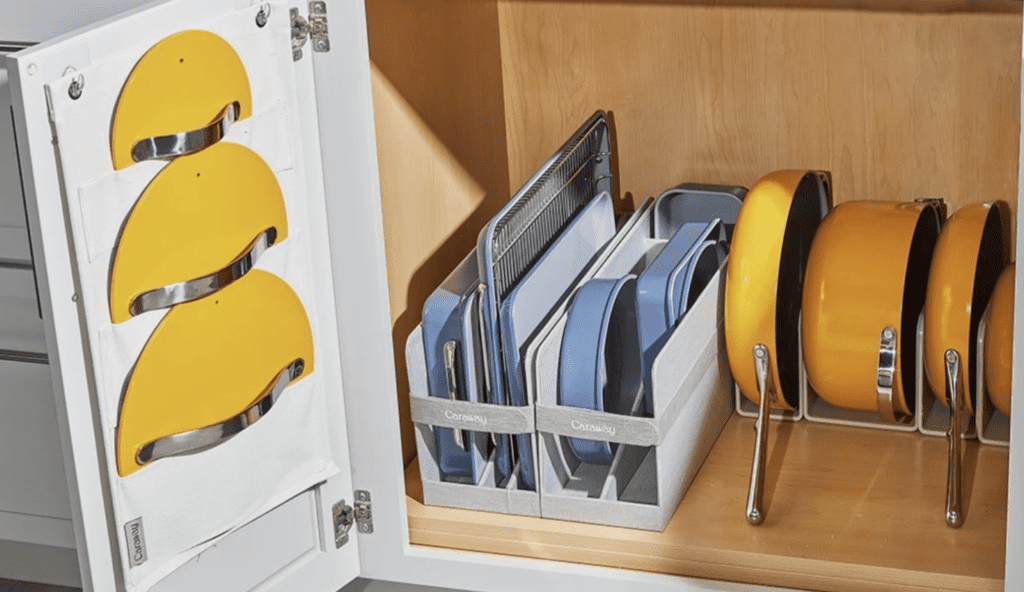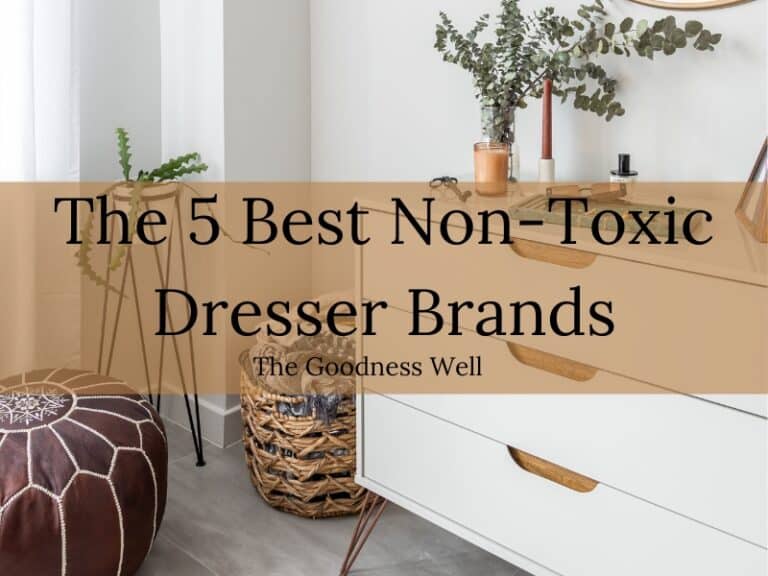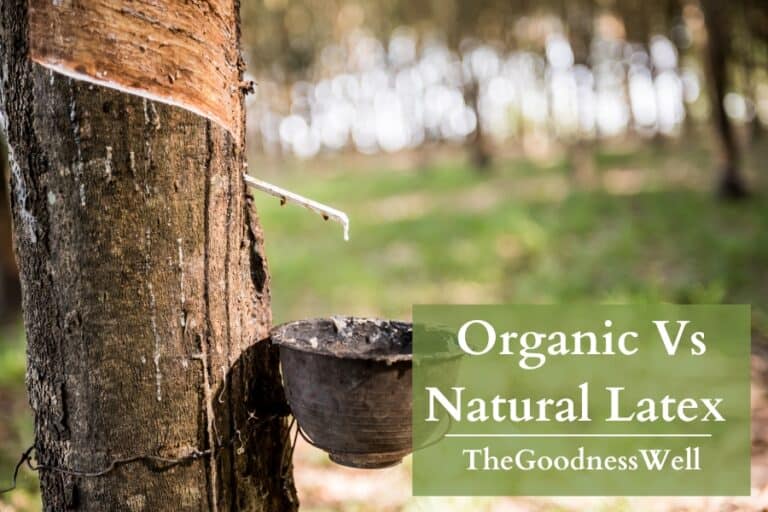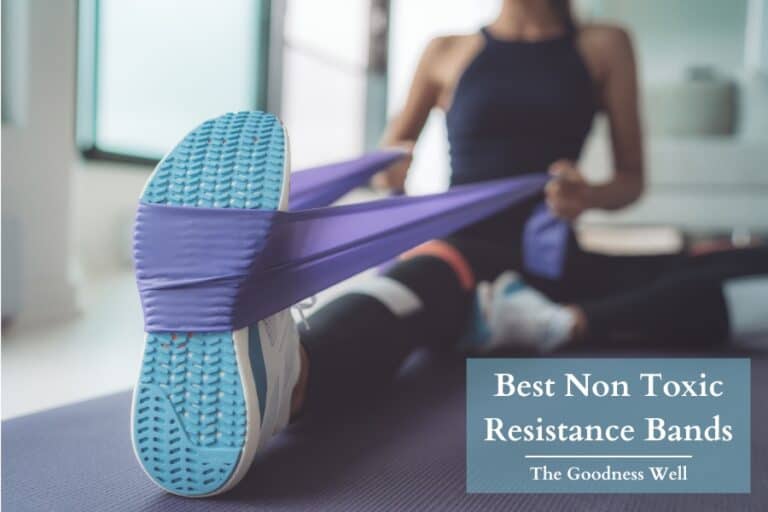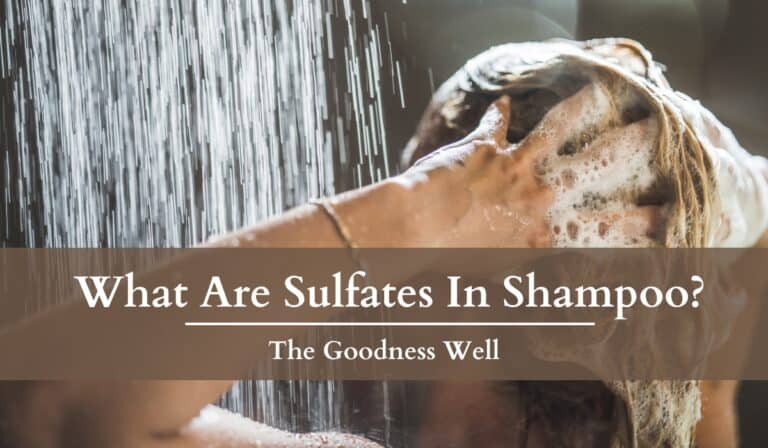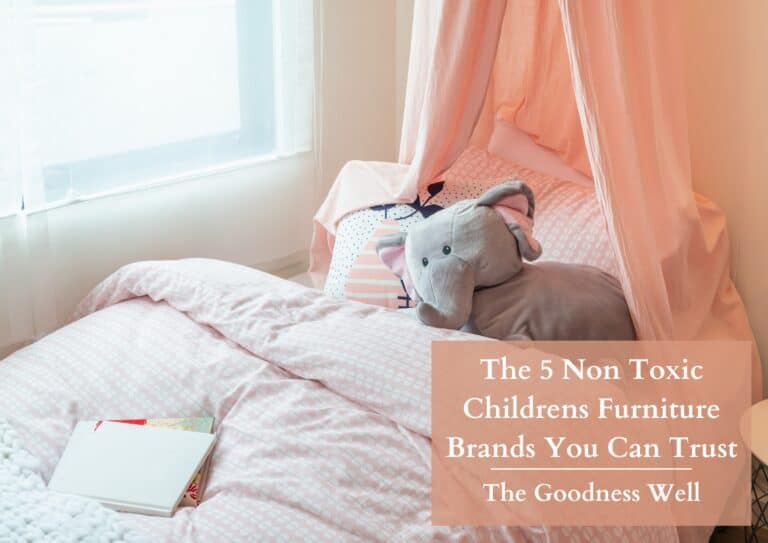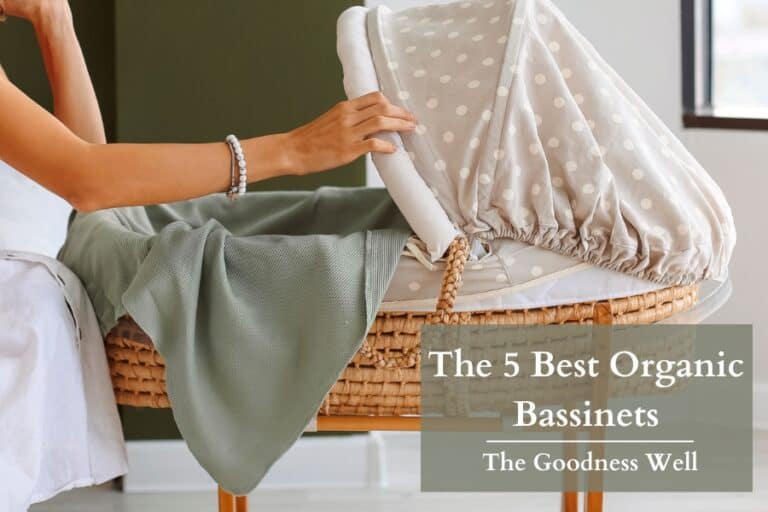The 7 Best Non Toxic Cookware Brands: Healthy Cooking
Caraway offers high-quality ceramic-coated cookware that’s free of harmful chemicals, eco-friendly, and ethically manufactured, all packaged sustainably without single-use plastics.
Our Place boasts the multifunctional “always pan” and eco-friendly kitchen tools. They use recycled materials and support causes like Feeding America.
Great Jones, a women-led NY brand, offers stainless steel to cast iron cookware, all with a focus on health and quality. They also offer custom engraving!
Milo by Kana Lifestyle offers stylish, sustainable cookware, free from PFOA, PTFE, and GenX. They feature recycled cast iron, focus on carbon-neutral shipping, and support environmental initiatives.
*A previous version of this article recommended Xtrema and Green pan as non-toxic options for cookware, however due to a lead controversy in Xtrema pans and evidence of greenwashing by Green Pan, we no longer recommend these brands.
When I first found out what kind of toxic chemicals were in most cookware (even mine!) I was a pretty peeved. 😒
So we did a bunch of research to find the healthiest, non toxic cookware that will keep your family safe and help you ditch those toxic pans.
Don’t forget to also check out our related post about non toxic cooking utensils! As many utensils out there can also have toxic chemicals we want to avoid.
The Best Non Toxic Cookware brands are:
- Caraway- Best Overall
- Our Place
- Great Jones
- Made In
- Milo by Kana
We are reader-supported. So some links in this post may be affiliate links, which means we may earn a small commission if you make a purchase. Learn more
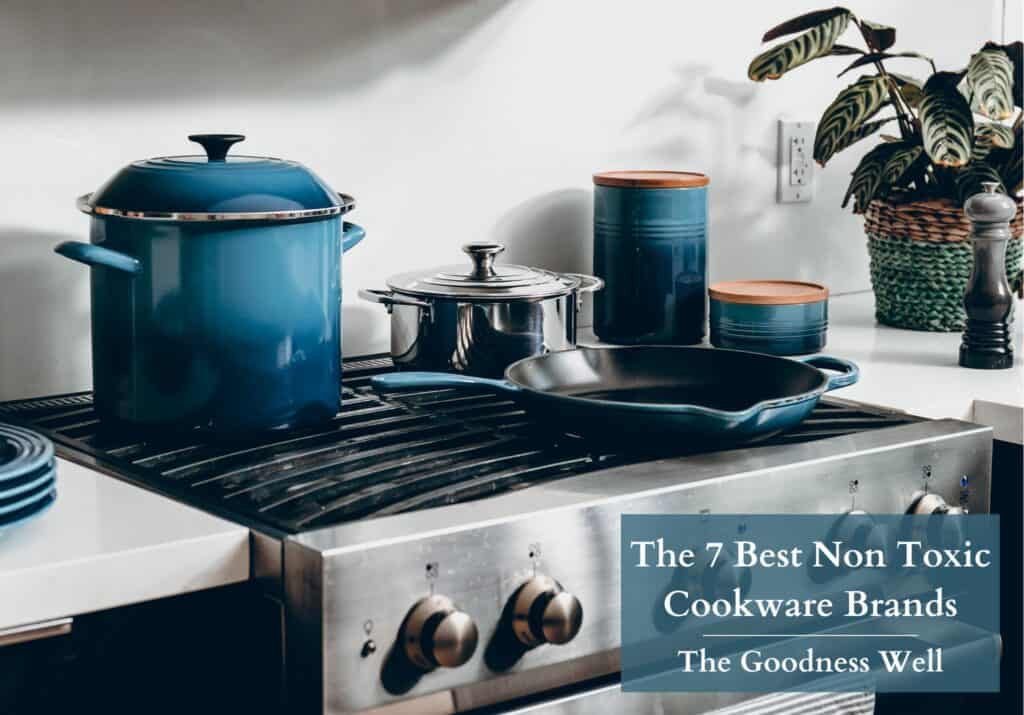
Non Toxic Cookware Materials (Ranked 1-5)
1. Ceramic-Coated Pans
Out of the main two types of non-stick pans, ceramic-coated is the safest one you will find.
It’s affordable, naturally non stick, easy to handle and clean, and can be pretty stylish!
Most of these pans use an aluminum or stainless steel core that’s covered with a ceramic-coating.
Treating them right is key! Avoid using any metal spatulas or spoons as they can scratch away the protective coating- more so on the cheaper brands, but it’s safe practice for all ceramic-coated cookware.
I recommend using silicone spatulas for a lot of your cooking on these as they’re very gentle.
With regular use, these ceramic pieces can last a good 3-5 years.
Pros:
- Safe non-stick alternative to PTFE/Teflon
- PFOA, PTFE, and GenX free
- Easier to clean compared to many other cookware types
- Available in a variety of colors and designs due to the versatility of ceramic coatings
Cons:
- The ceramic coating can wear off over time, reducing its non-stick properties.
- Not suitable for high-heat cooking as it might degrade the coating faster.
- Prone to chipping or scratching, especially when used with metal utensils
Here are some Ceramic-coated Cookware from some of our trusted brands:
2. Cast Iron Cookware
Cast iron is probably the most sustainable cookware there is. It lasts forever! (with the right care)
They hold on to heat super well, spread the heat evenly, and don’t contain any toxic chemicals. You can even add a little extra iron to your diet by using cast iron.
Avoid cooking acidic dishes like tomato sauce as they can leach more iron out of the cookware and give your food a strong metallic flavor.
*Important: cast iron needs a little more TLC than other pans. However, if you care for it right, it will last so long you shouldn’t ever need anything else.
We’ve had our cast iron pan for years and while we do like to use other pans here and there, we honestly don’t need anything else!
Here is a great article on how to season and care for your cast iron skillet
Pros:
- Excellent heat retention and distribution
- Sustainable; can last for generations if properly cared for
- Can be used on stovetops and in ovens at high temperatures.
Cons:
- Heavier than other cookware
- Requires regular seasoning to maintain its non-stick properties.
- Can rust if not properly dried after washing.
Some Cast Iron Options From Great Jones:
3. Carbon Steel Pans
Think of carbon steel pots and pans as the cousins of cast iron pans.
They’re made of 99% iron and just a hint (1%) of carbon, which can give a tiny boost of iron to your meals. And unless you’re watching your iron intake closely, a bit of natural iron can be a good thing!
While they may not be as pretty as ceramic pans, they’re light, heat up quickly, and are super tough.
Pros:
- Affordable
- Lightweight and durable
- Safe in oven, stove, and microwave
- Mostly nonstick
- No toxic chemicals
Cons:
- Not dishwasher safe
- Lack of color variety
Some Carbon Steel Options From Made In:
4. Stainless Steel Cookware
Good ol’ stainless steel- one of the trusty materials in our own kitchen. Made from a mixture of steel, carbon, and chromium, it’s a durable and non-reactive option.
However, all stainless steel isn’t created equal. When shopping, it’s worth splurging a bit on the higher-quality stuff. You’ll not only get better quality but also avoid any nickel leaching into your food from cheap materials.
Pros:
- Highly durable and resistant to rust or staining.
- Non-reactive, making it suitable for cooking various foods, including acidic dishes.
- Easy to maintain
- No toxic chemicals
Cons:
- Might not distribute heat as evenly as other materials unless it has an added layer or core of another heat-conductive metal.
- Foods can stick to its surface, especially if the pan is not properly pre-heated.
- Lower-quality stainless steel might leach nickel or other metals.
Some stainless steel cookware options from Great Jones
5. *100% Pure Ceramic
Not to be confused with ceramic-coated cookware (which isn’t ceramic at all), full ceramic cookware is real ceramic made completely from natural clay.
And while this material is the most non-toxic for cookware (as long as it is lead and cadmium free), we haven’t found any reputable brands that offer real pure ceramic cookware.
We know. You’re thinking of Xtrema. However, a controversy in recent years about heavy metals in their cookware and a lack of transparency in the past about their glaze made us skip recommending this brand. We aren’t officially accusing them of anything, but the evidence made us lean toward leaving them out of our recommended brands.
Aside from them, we could not find any other brands that offer full ceramic with a non toxic glaze.
And without a glaze for full ceramic pans, its use in cooking is just not practical. Since full ceramic is very porous, a pan without a glaze would just keep the flavor of whatever food was cooked in it.
Pros:
- Made from natural materials and free from toxic chemicals.
- Even heat distribution
- Naturally non stick
- Easy to clean because of its smooth surface.
- Good for various cooking methods.
Cons:
- No available options
- Cheaper brands can contain lead or cadium
- Might not retain heat as long as metals like cast iron
- Can crack or break if dropped
Non Toxic Bakeware Options
Glass Bakeware
Now you can’t cook on the stove with glass but for bakeware, it’s the best there is. Apart from being visually appealing, glass cookware doesn’t leach any substances into food.
Glass is a staple in our kitchen for all sorts of uses.
Pros:
- Cheaper non toxic cookware option
- Chemically inert; doesn’t react with food or leach substances.
- Transparent, allowing you to monitor your cooking without removing the lid.
Cons:
- Can shatter if exposed to sudden temperature changes (thermal shock).
- Typically heavier than other materials.
- Doesn’t retain or distribute heat as efficiently as some metal options.
- Do not use in toaster ovens, under broilers, or on stovetops
- Cool glassware completely before adding liquids or water
- Don’t set a hot pan on a cold surface and vice versa- allow it to cool gradually.
- Be sure any glass you buy is oven safe
Some Glass Cookware Options From Amazon:
Silicone Bakeware
Most silicone bakeware is safe to use and isn’t very expensive. Its versatility and durability make it and glass our go-to for baking needs. Just avoid cheaper brands as they can sometimes use BPA (another toxic chemical).
Pros:
- PFOA, PTFE, and GenX free
- Easy to clean
- Flexible, durable, and stores well
- Is sustainable and lasts long
Cons:
- Cheaper brands could break off into food
Some Silicone Bakeware Options From Amazon:
Toxic Cookware Material To Avoid
You would hate to buy all organic, fresh food just to have toxic chemicals leaching from your pots and pans ruin the healthiness of your dinner.
That’s why it’s crucial to understand the potential risks of toxic cookware and make a switch to non-toxic options like ceramic and cast iron, ensuring that your efforts to eat clean and healthy are not undermined by toxic metals in your kitchen.
1. Teflon
Ever seen the movie Dark Waters? You should.
Teflon is actually the brand name for polytetrafluoroethylene (PTFE), a “stable” PFAS that’s still known to be toxic.
Maybe you’ve also heard of PFOA, another PFAS. This more unstable molecule used to be used in producing PTFE, but because it’s so toxic, its use was phased out and replaced with “GenX” chemicals to produce PTFE now.
“So, it’s safe, right!?”
Not so fast.
According to the EHP, GenX is now known as the “regrettable substitute”. GenX trials on animals have shown negative health effects on the liver, kidneys, immune system, development of offspring, and an association with cancer.
If a pan is advertised as non-stick but doesn’t state it is ceramic non-stick, it is probably made with PTFE. This does not apply to natural (but less effective) non-stick pans like cast iron, stainless steel, or carbon steel.
2. Granite
Granite cookware, commonly known as “graniteware” or “porcelain enamel”, is not made purely of granite. Instead, it has a metal core that is coated with porcelain enamel.
While some granite cookware is made with ceramic-coatings, many options are made with PTFE and it can be hard to tell the difference if you don’t know what to look for.
3. Copper
Yes, I would agree that copper cookware is pretty to look at. However, copper pots and pans can cause excess copper to leech into our food, especially when they are old and chipped, or when cooking acidic foods.
It has been shown that chronic exposure to increased copper levels can lead to GI and liver issues.
Also, according to the National Institute of Health, some researchers argue that excess amounts of dietary copper are involved in the development of Alzheimer’s.
All in all, I think it’s safe to say it’s better if we just avoid those pretty copper pots and pans.
Now that you know which to avoid and what to look for, here are our favorite non toxic cookware brands below:
The 7 Best Non Toxic Cookware Brands
Caraway
Caraway is our top pick as they offer quality (and stylish!) non toxic cookware in a fair price range.
They offer ceramic-coated cookware and just recently added stainless steel!
They don’t use any toxic chemicals like PFOA or PTFE in their cookware and also use eco friendly packaging.
Also, they work with manufacturing partners that ensure a safe working environment and fair pay.
On top of all that they’ve got some of the best toxic free bakeware out there.
Hard to beat that!
Product Highlights:
- Price Range: $90-1,005
- Offers ceramic-coated cookware free from PTFE (e.g. Teflon), lead, cadmium, and other toxic metals
- Uses recycled cardboard for shipping, avoids single-use plastics, and includes biodegradable cork trivets.
- Supports BSCI and SMETA-certified manufacturing partners
- Downside: Doesn’t offer cast iron
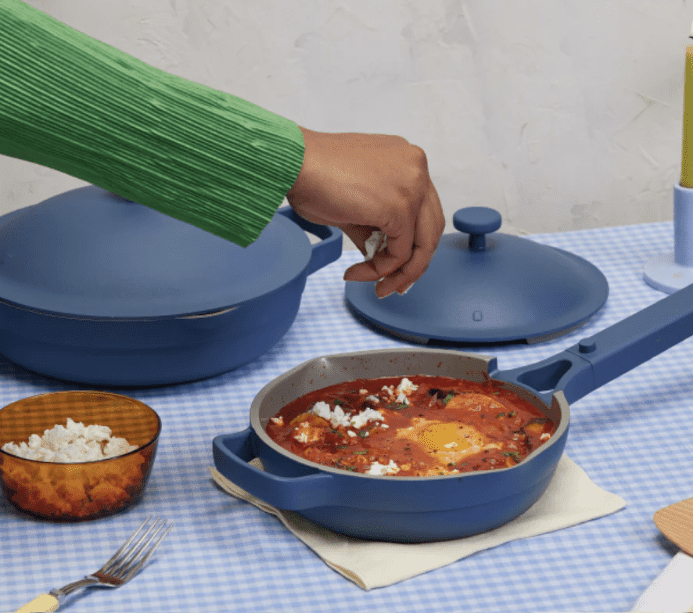
Our Place
Our Place offers a wide variety of healthy non toxic kitchenware, from ceramic-coated and cast iron skillets to knives and cutting boards.
What we love most about Our Place is their cost-effective “Always Pan“. It’s got the ability to be used on top and in the stove, making it a great choice to avoid spending money on various other cookware.
However, some users have complained of some staining issues with this pan, so be aware and ready to use some elbow grease if necessary.
It’s also a family-owned business with a great back story committed to providing safe cookware while using eco-friendly practices.
Product Highlights:
- Price: $60-835
- Wide variety of non toxic cookware such as cast iron and ceramic nonstick cookware
- PFOA, PTFE, and GenX free
- Works with women-owned manufacturers
- Plastic-free packaging- fully recyclable and biodegradable
- 100-day trial with free shipping and returns
- Offers a 15% student discount
- Downside: Users complain of staining issues with Always Pan
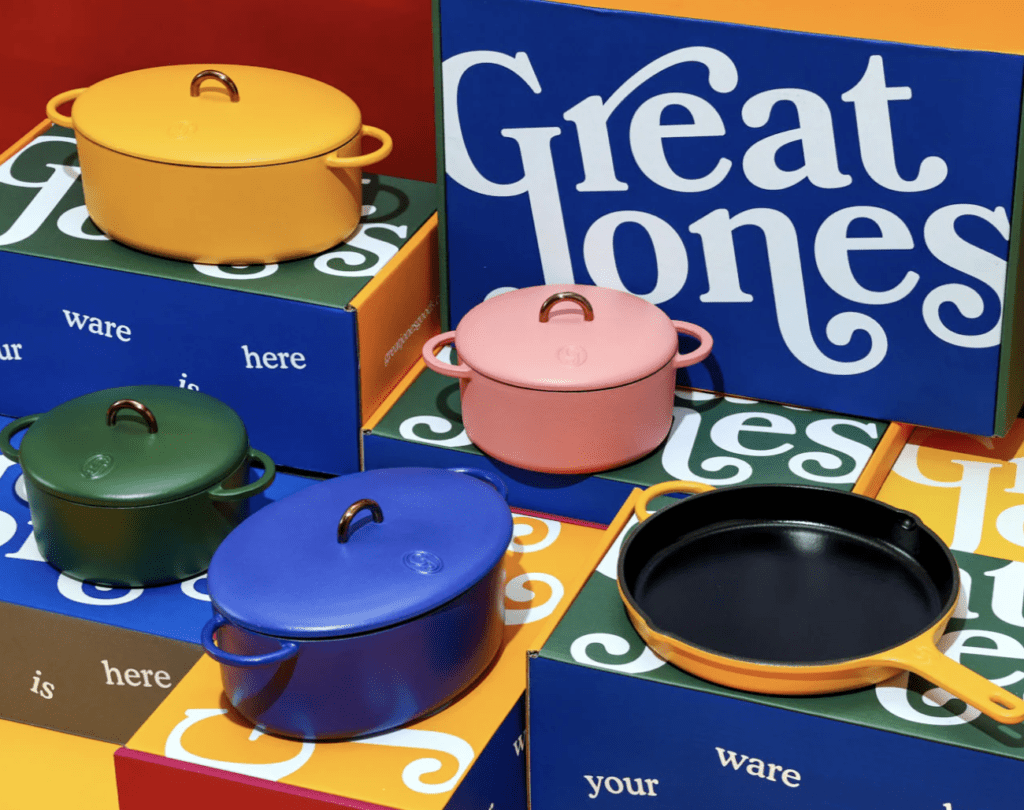
Great Jones
Great Jones is a unique brand in the cookware world.
Not only do they offer cast iron pans, but they offer the option to engrave them as well! Great gift giver.
Also, they even offer a free text service that provides you with recipe suggestions and real-time cooking advice.
Ok, Great Jones, stop showing off.
*Some customers reported issues with delivery times and hard to reach customer service, while others say their products are more than worth it.
Product Highlights:
- Price: $80-495
- Offers cast iron cookware and stainless steel cookware sets
- PFOA, PTFE, and GenX free
- Custom-engraving
- 60-day trial with free returns
- Women-owned and operated business
- Collaborates with small black-owned businesses
- Some products made in the USA
- Downside: Reported customer service issues
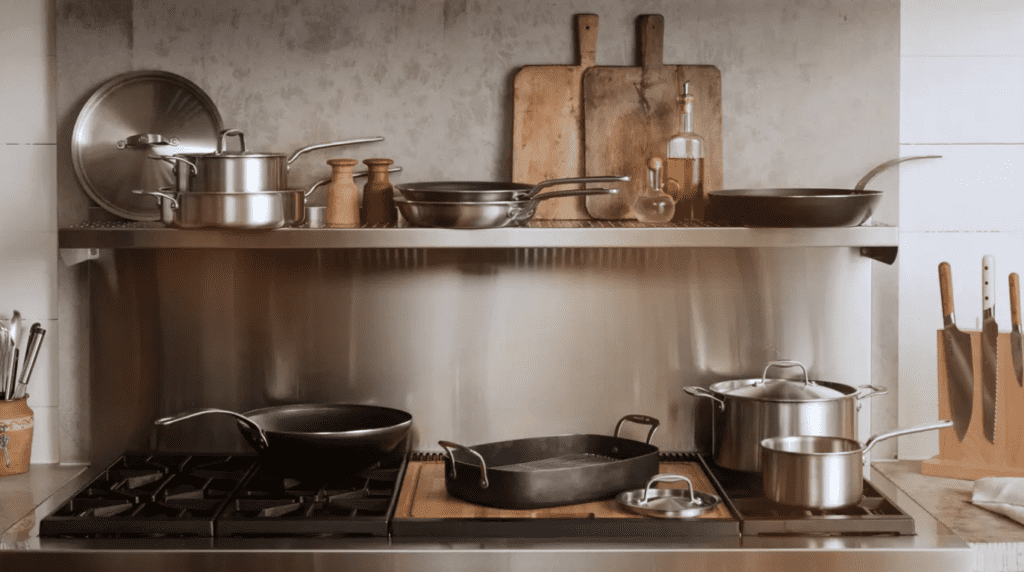
Made in
A family-run business with deep roots in the cookware industry, Made In offers high-quality non toxic cookware with an emphasis on sustainability and recycling.
Not to mention, they are also one of the few non-toxic brands that offer carbon steel and porcelain options.
In addition, they are one of the few brands that produce its products here in the USA!
Their award-winning cookware is also trusted by some of the world’s top chefs, making it an easy choice for your non toxic kitchen.
If it wasn’t for their pretty high price point, they’d be higher on the list.
Product Highlights:
- Price: $89-1,049
- PFOA, PTFE, and GenX free
- Wide range of non toxic cookware including carbon steel and porcelain
- Made in USA
- Offers a recycling program
- Offers a 45-day trial
- Downside: Higher in price
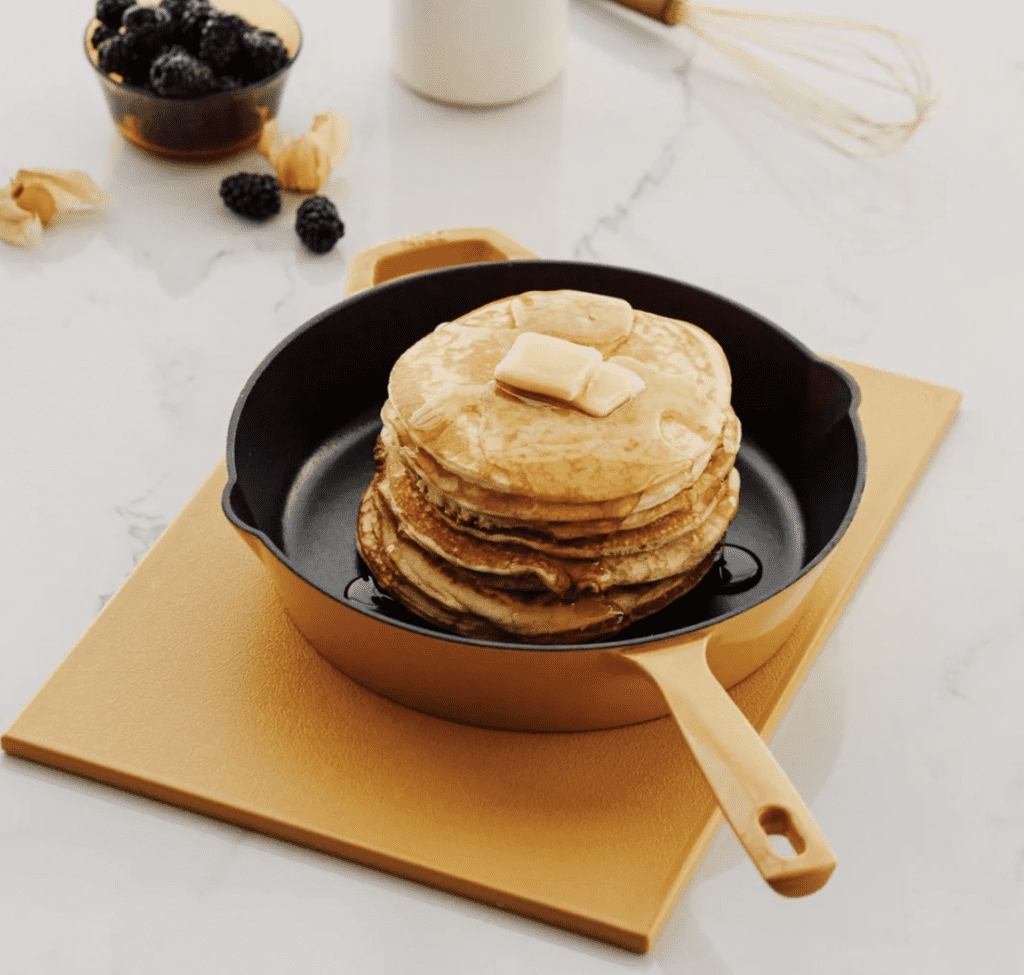
Milo by Kana
I absolutely LOVE the aesthetic of this brand. 😍
Milo by Kana Lifestyle is not only a brand committed to style, but sustainability too, proving it certifications and partnerships.
And while their cast iron cookware is limited in options, they’ve got all you need really.
Their colorful array of healthy non toxic cookware will have you itching to show it off the next time you have people over. Add all that with the fact that they are PFOA, PTFE, and toxic chemical free.
Product Highlights:
- Price: $105-337
- PFOA, PTFE, and GenX free
- Offers variety of cast iron and stainless steel cookware
- Uses 40% recycled cast iron
- Commits to offsetting 100% of shipping-related carbon emissions
- Has several environmental commitments and certifications
- Works with 1% for the Planet, an environmental initiative
- Downside: Limited selection
To sum up, all of these non toxic cookware options are great for new homeowners or those wanting to rid their homes of any unwanted toxins lurking where they might not expect. Happy Cooking!
Additional Sources:
Copper – Health Professional Fact Sheet (nih.gov)
PTFE-coated non-stick cookware and toxicity concerns: a perspective – PubMed (nih.gov)
7 Nutrient Deficiencies That Are Incredibly Common (healthline.com)
